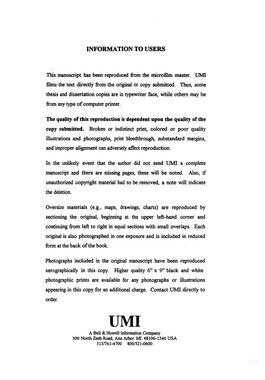| dc.contributor.advisor | Ragan, Sandra, | en_US |
| dc.contributor.author | Imai, Chikage. | en_US |
| dc.date.accessioned | 2013-08-16T12:29:31Z | |
| dc.date.available | 2013-08-16T12:29:31Z | |
| dc.date.issued | 1997 | en_US |
| dc.identifier.uri | https://hdl.handle.net/11244/5428 | |
| dc.description.abstract | As a result, the study finds that interactants' recognitions and handlings of misunderstanding are largely the same across American and Japanese conversations, while, at the same time, there are also some cultural differences. In terms of misunderstanding recognitions, interactants across the two cultures are directed to the presence of a misunderstanding by five distinct forms of "wake-up" calls. Through these calls, interactants "wake-up" to the reality of misunderstanding from the presumed intersubjectivity. In terms of misunderstanding handlings, interactants across the two cultures resort to one of two major alternatives: exposing or waiving a misunderstanding. Several psychological and pragmatic factors appear to guide interactants' handling choices. | en_US |
| dc.description.abstract | The primary purpose of the study is to examine the occurrence of misunderstanding in everyday conversation. Specifically, the study explores how conversational interactants recognize and handle misunderstandings during the course of their talk. The secondary purpose of the study is to compare and contrast American and Japanese conversations in terms of interactants' recognitions and handlings of misunderstanding. | en_US |
| dc.description.abstract | These findings further lead to the comprehension of a mechanism (logic) of everyday conversational misunderstanding: how misunderstandings emerge and develop in human conversation. The logic consists of four pre-conditions of conversational misunderstandings. The comprehension of the ways in which everyday misunderstandings develop may serve as a critical first step toward theorizing misunderstanding. | en_US |
| dc.description.abstract | Regarding cultural differences, the study finds that American conversationalists tend to recognize a wider range of misunderstanding than their Japanese counterparts do and that Japanese conversationalists use a special method of handling a misunderstanding, namely a "secret operation." Further, the two cultures demonstrate differing views of face-saving concern as a factor guiding interactants' handlings of misunderstandings. The potential cultural backgrounds behind these differences are addressed. | en_US |
| dc.description.abstract | To pursue the above purposes, the study employs both the conversation analytic and interview methods. That is, the study analyzes interactants' language behaviors in light of their semantic experiences available through interviewing. Simultaneous examination of conversational and interview data best illuminates the reality of everyday misunderstandings as lived and experienced by ordinary interactants. | en_US |
| dc.format.extent | x, 291 leaves : | en_US |
| dc.subject | Conversation. | en_US |
| dc.subject | Speech Communication. | en_US |
| dc.subject | Oral communication Cross-cultural studies. | en_US |
| dc.title | A cross-cultural analysis of the recognition and handling of conversational misunderstanding / | en_US |
| dc.type | Thesis | en_US |
| dc.thesis.degree | Ph.D. | en_US |
| dc.thesis.degreeDiscipline | Department of Communication | en_US |
| dc.note | Adviser: Sandra Ragan. | en_US |
| dc.note | Source: Dissertation Abstracts International, Volume: 58-01, Section: A, page: 0028. | en_US |
| ou.identifier | (UMI)AAI9719903 | en_US |
| ou.group | College of Arts and Sciences::Department of Communication | |
